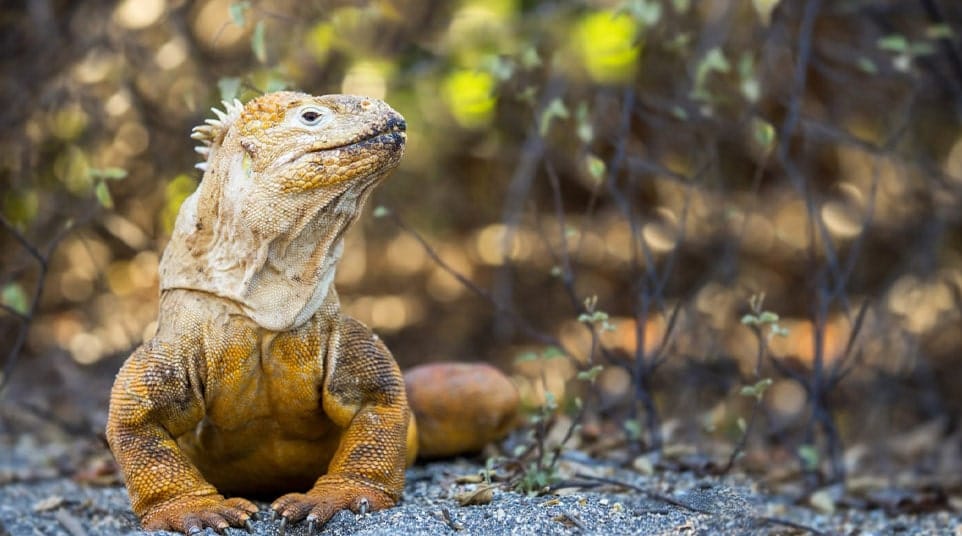- Home >
- Travel Guide >
- Galapagos Islands >
- Animals & Wildlife >
- Galapagos Land Iguana
Galapagos Land Iguana Facts
Name: Land Iguana
Family: Iguanidae
Scientific Name: Conolophus subcristatus
Length: Up to 120 cm (39 in)
Weight: Males up to 75 kg (165 lbs) - Females up to 35 kg (75 lbs)
Category: Reptiles
Number of Species: 28
Endemic Species: 19
Twenty eight species of reptiles have been recorded in Galapagos in recent times. Nineteen of these species are endemic to the archipelago, 11 of which are confined to single islands, and three species have been introduced.
Category: Reptile
The land iguana is locally fairly common, inhabiting the arid zone of the islands. Hybrids with the Marine Iguana have been recorded on South Plaza but do not appear to be very long-lived. The Santa Fe Land Iguana is fairly common; confined to Santa Fe Island, inhabiting the arid zone. On Quasar Expeditions Galapagos Cruises you will have several opportunities to see these reptiles up-close.
Identification:
Large and pale, generally yellowish-orange in color with darker brown back. Distinguished from Marine Iguana by the rather pointed nose and from the Santa Fe Land Iguana by the more restricted row of spines along the back. Adult Male: Row of long spines along back of neck, with shorter spines on head and along upper back. Mature individuals assume some red coloration, particularly during the mating season. Adult Female: Considerably smaller and less brightly colored than adult male, with shorter spines.
Behavior:
Forms small colonies although often found singly. Males are highly, territorial, defending their territories against intruders by engaging in head-butting battles. Breeding begins in different months on different islands: on Isabela Island in January, on Fernandina Island in June, on Santa Cruz Island in September and on South Plaza Island in January. Males can take up to 12 years to reach sexual maturity.

